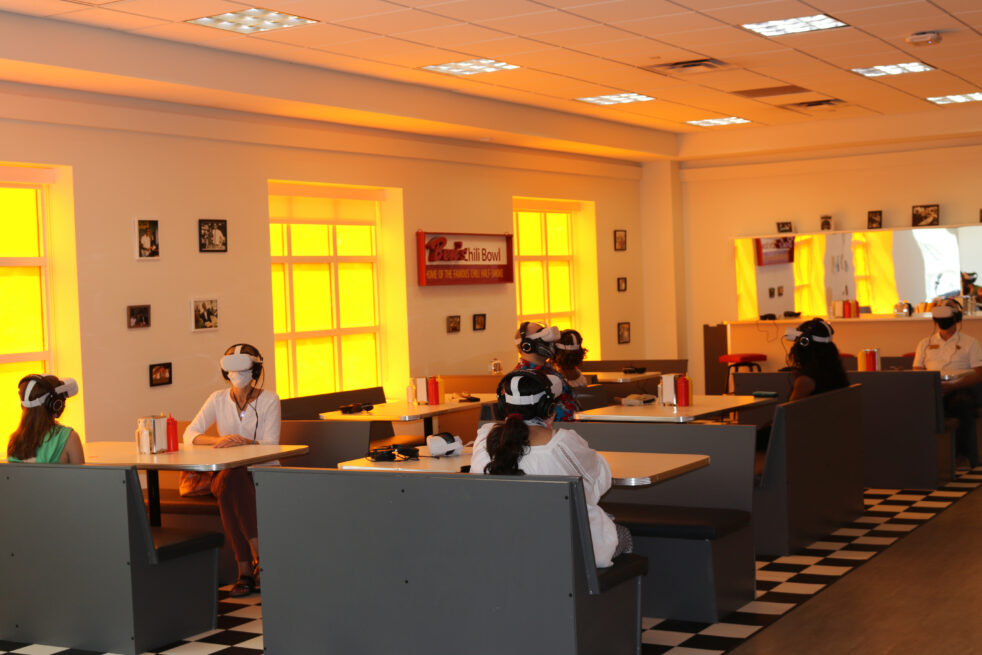The 360-degree virtual experience and documentary, “Traveling While Black,” by Roger Ross Williams, allows the viewer a seat at the table as African Americans from multiple generations share their experiences of finding safe spaces while traveling.
“Traveling While Black,” was first shown at the Sundance Film Festival in January 2019. It made its way through many film festivals around the world and is now being shown at Tech’s Ferst Center for the Arts through Friday, Nov. 12.
Aaron Shackelford, Director of the Office of the Arts at Tech, first saw “Traveling While Black,” in the fall of 2019, and was overwhelmed by the experience.
“It was the first time I had encountered virtual reality in a way that I thought brought something meaningful and substantial to the artistic experience, because of the way it allows you to be attuned to these stories,” Shackelford said.
When it came to introducing this documentary to Tech, Shackelford and his colleagues were looking for a way to bring accessible artistic experiences to students that would also follow COVID-19 safety guidelines. As an installation piece, “Traveling While Black” allows participants to engage in an intimate experience while still maintaining social distance and mask guidelines.
Participants begin by sitting in a recreated booth at the famous Ben’s Chili Bowl in Washington, D.C., a civil rights landmark and restaurant that has stood as a place of safety for African Americans since 1958. In this setting, participants enter virtual reality through an Oculus headset and are fully immersed in the film. Footage from the past and present are woven together to express the hardships and reality of traveling as a Black person in the United States.
The film heavily references, “The Green Book,” a guidebook for African American travelers created by Victor Green during the Jim Crow era. It was printed from 1936 to 1966 and helped its readers find safe places where they could face prejudice due to the color of their skin. “Traveling While Black” ends with a quote by Green sharing his hope for a day the book would not be needed:
“There will be a day sometime in the near future when this guide will not have to be published. That is when we as a race will have equal opportunities and privileges in the United States. It will be a great day for us to suspend this publication for then we can go wherever we please, and without embarrassment.”
While the book is no longer in print, the documentary acknowledges that it remains in the minds of Black Americans to this day.
Shackelford believes that many people are intellectually aware that these traumas and experiences still happen, but to be there at the table and to hear them — brought home in an emotional, impactful, and inclusive way — makes a difference.
“I think it’s important for students (to see “Traveling While Black”) to understand that there are people around you who are experiencing this or that your own lived experience is being heard and represented in a way that maybe doesn’t happen every day at Georgia Tech,” he said.
Shackelford also hopes to see students walk away from the experience inspired to share their own stories and utilize technology to enhance their own storytelling. He encourages students to find ways to create important conversations about inclusivity and equity.
“I hope people think about what they can create and what they can do with the story they want to tell,” Shackelford said.
